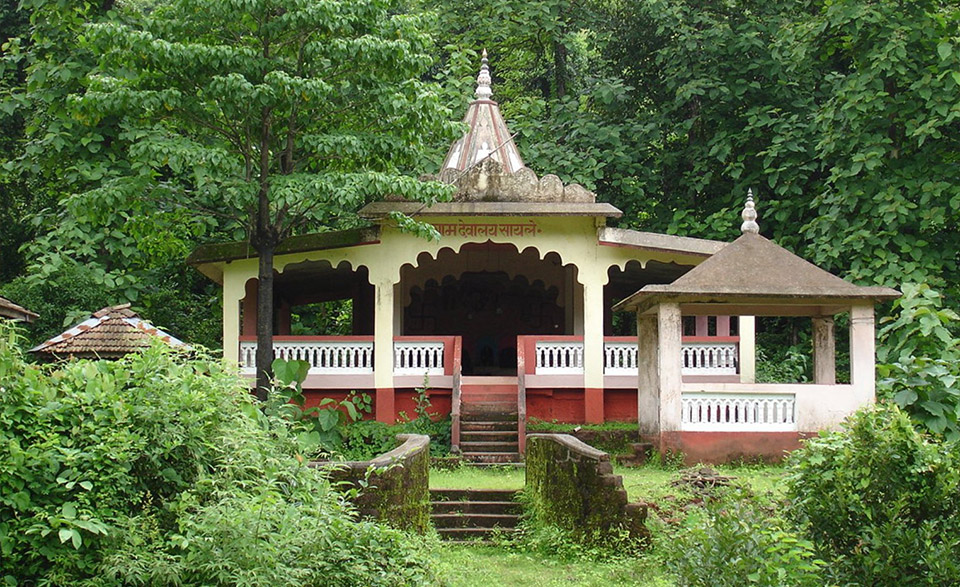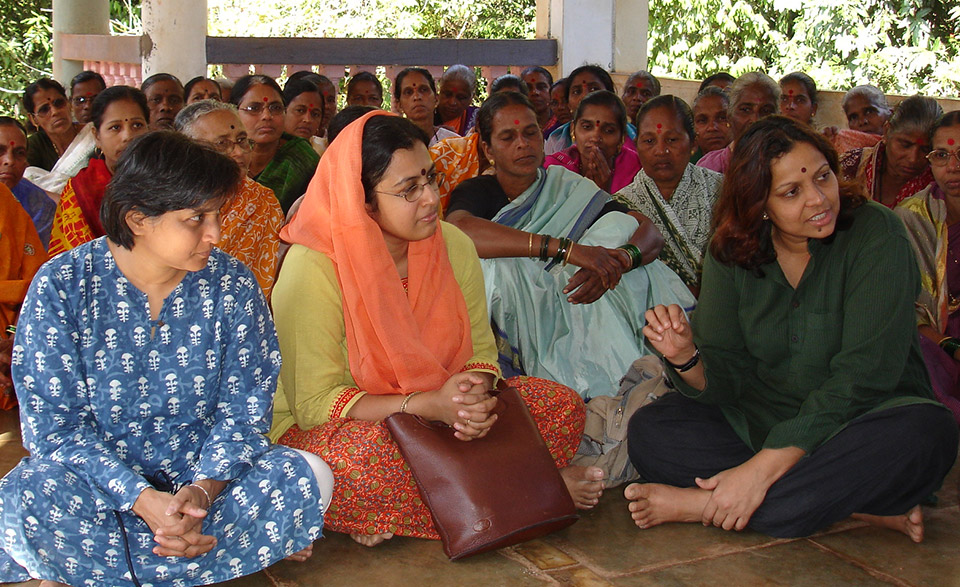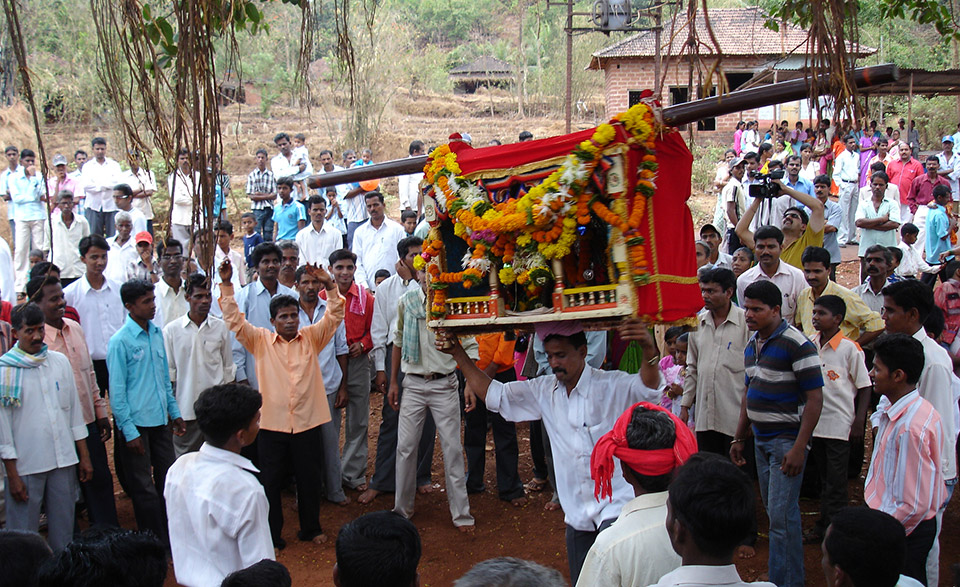На север Западен Ghats на Индија во државата Махараштра е еко-регионот формирање на глобалната биодиверзитетот жариште. На високо биодиверзитетот на регионот е надополнет со висока разновидност во локалните традиции во регионот. Речиси секое село во регионот Sahaydri-Konkan има најмалку една света шумичката со површина движат од само неколку до стотици хектари. Свети шуми преживеале за многу стотици години, и денес делуваат како резервоари на биодиверзитетот засолниште многу растителни и животински видови, како скоро мрежа на релативно непречено дивиот свет.
Загрозени.
Закани
Закани за свето градини потекнуваат главно од модернизацијата и глобализацијата. Мали свето градини често се смета како мали незначителни закрпи на шумите кои го попречуваат развојот на работа. Многу свети шуми се уништени, и само вештачки храмови биле зачувани. Примери за причините зошто овие шуми се отстранети се вмешување, изградба на патишта, пасење, изградба на брани и канали и урбанизација. Одлуки за менување или отстранување на одредени шумичката често доаѓаат од околните села каде се зголеми западните влијанија предизвика слабеење на религиозни верувања дека се шири низ регионот.
Визија
Регионот е веројатно да имаат корист од соодветна форма на ко-управување на светите шуми, од страна на локалните Чувари како и со други регионални чинители. Најмногу ветува начин да се постигне ова е преку повторно воспоставување културните норми и зајакнување Чувари, локалното население и традиционалните владеење тела. Долгорочна работа е важно да се создаде солидна сојузи помеѓу различни партии. Континуирана финансиска поддршка е потребна заедно со силна тек олеснување на процесите кои се вклучени. Овие можат да бидат ефективни средства да го поминат на светите шуми и нивниот biocultural значење за идните генерации.
Акција
АЕРФ работеше специјално на скалирање и репликација на долгорочното управување со светите градини со вклучување на заедницата во различни села. Тие се обидоа да ги оживеат традиционалните пристапи кон природата со подигање на свеста на локалното население и со развој на стимулации за управување. Тие собраа засегнати страни и на ниво на блок и во окружно ниво.
Политика и право
Правната сопственост на Гроувс во моментов е во државниот оддел за приходи.
Заштитата на светите насади во регионот не може да го користи истиот правен систем како оној за заштита на шумите затоа што правилата за управување се различни. Во некои свети насади, Ограничен додаток на екстракција е утврден за специфични производи што не се дрвени шумски производи. Правилата и регулативите дефинирани од предците не се запишани, и понекогаш се извртени за краткорочни придобивки.
Чуварите на имот
Традиционалните практики за зачувување Таквите свети шуми се важна компонента на пејзажот во три области на северозападниот дел на државата Махараштра. Гроувците се претежно во сопственост на селани кои сè уште се во можност да преживеат на своите земји без да ги развиваат своите свети градини. Управувањето со светата шумичка, вклучувајќи верски функции и заштита, е надгледувано и набудувано од група селски старешини. Културното значење е големо, И повеќето фестивали во заедницата се слават во храмот сместен во Светата Гроув. Некои од насадите исто така функционираат како гробишта и крематориуми, а некои се престој на духови и божества. Освен вода, Луѓето не користат никакви ресурси од овие градини, како што е направено во другите региони во Индија.
Коалицијата
Применетата Фондација за истражување на животната средина (Аерф) работи на зачувување на светите градини во северозападниот дел на Гатс 15 години. Во блокот Сангамешвар, АЕРФ ја оживеа традицијата на свети насади и го вклучи локалното население во планирањето, како и имплементацијата за долгорочно зачувување на светите насади.
Конзервација алатки
Ко-управувањето е една од важните почетни точки, олеснување на меѓусебното разбирање помеѓу страните. Организирани се сесии на засегнатите страни, правење различни групи ентузијасти и iousубопитни за светите насади. Медиумите играат важна улога во градењето на консензус и свесност за проблемите со животната средина, Но, тие би можеле да разговараат за повеќе теми за светите насади. АЕРФ ги стимулира локалните заедници да ги оживеат своите антички традиции преку партиципативна работа. Тие користеле локални традиционални митови, Танц, Песна и церемонија за развој на заедничко разбирање за космовизијата на селаните, Враќајќи го таму каде што е потребно за поддршка на одржувањето на светите насади. дополнително, Тие прават залихи на биолошката разновидност за да ја откријат тежината на ситуацијата.
„Одлуките, како што се барање дозвола за користење на светите насади ресурси за благосостојбата на селото, генерално се донесуваат во храмот“.
- Архана Годбол, Директор на применетата фондација за истражување на животната средина.
- Godbole, Сарнаик, Наскоро, (2010) Зачувување врз основа на културата на светите насади: Искуства од северозападниот гејтс, Индија, во Verschuuren, Диви, McNeely и Овиедо, Свет природни локалитети: Зачувување на природата и културата, Земјата скенирање, Лондон.
- Применета фондација за истражување на животната средина во Пуна, Индија: www.aerfindia.org








